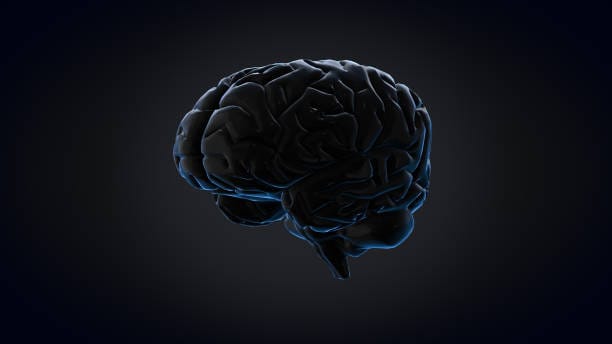Addiction does not begin with chains—it begins with a spark. For some, it is the first sip of a drink at a party, the smooth exhale of smoke curling into the air, or the rush of winning a hand at cards. For others, it is more subtle: the satisfying chime of a social media notification, the sweet hit of sugar melting on the tongue, the late-night binge of streaming episodes. Whatever form it takes, the process starts not with the substance or behavior itself, but with the brain’s remarkable sensitivity to pleasure, reward, and novelty.
At the heart of this lies one of nature’s most powerful survival tools: the brain’s reward system. It is designed to encourage behaviors that keep us alive—eating, social bonding, exploring. But in the modern world, this ancient circuitry can be hijacked by substances and activities far more intense than anything our ancestors ever encountered. Addiction, then, is not a sign of weakness; it is the result of a brain doing exactly what it evolved to do, only in an environment it was never prepared for.
The Neurochemistry of Pleasure
Inside your brain, billions of neurons form intricate networks, communicating with one another through tiny bursts of chemicals called neurotransmitters. One of the most famous is dopamine, often mistakenly labeled the “pleasure molecule.” In truth, dopamine’s role is more subtle: it is not about the feeling of pleasure itself, but about anticipation, motivation, and learning. It tells the brain, This is worth paying attention to. Do this again.
When a person engages in something pleasurable—eating chocolate, hearing music they love, winning a game—dopamine is released in a part of the brain called the nucleus accumbens. This creates a powerful signal: whatever just happened is important. The brain remembers the cues associated with it—smells, sights, sounds—and stores them for future reference. In an evolutionary context, this is perfect. Finding ripe fruit, a good water source, or a safe place to rest should be remembered and repeated.
But addictive substances and behaviors flood this same system with dopamine far beyond natural levels. Cocaine, for instance, can cause dopamine concentrations to rise several times higher than normal. Opioids not only trigger dopamine release but also directly alter pain and pleasure circuits. Even non-chemical addictions, such as gambling or gaming, rely on unpredictable reward patterns that keep dopamine flowing, trapping the brain in a loop of seeking and craving.
The Hijacking of the Reward System
When the reward system is overstimulated repeatedly, the brain adapts. This process, called neuroadaptation, is a double-edged sword. On one hand, it helps the brain maintain stability; on the other, it sets the stage for dependency. Dopamine receptors in the brain may become less sensitive, meaning that the same activity no longer produces the same effect. The person must consume more, gamble longer, or scroll further just to achieve the same level of satisfaction. This is the phenomenon of tolerance.
Alongside tolerance comes sensitization—the brain’s increasing reactivity to cues associated with the addictive substance or behavior. A recovering alcoholic might walk past a bar and feel an almost physical pull toward the door, even years after their last drink. This is because the brain’s memory systems have tied environmental cues to the anticipated reward, and the dopamine system responds before any conscious decision is made.
In severe cases, this shift in brain function can alter priorities entirely. Activities once enjoyed—spending time with friends, pursuing hobbies—lose their appeal compared to the addictive behavior. The brain’s motivational circuits have been rewired to treat the addiction as the most important goal, regardless of the harm it causes.
Craving and Compulsion
One of the most misunderstood aspects of addiction is craving. It is not simply “wanting” something; it is a deep, almost primal urge that feels as though it arises from outside conscious control. Cravings are the product of powerful neural connections between the prefrontal cortex—the brain’s decision-making center—and the limbic system, which governs emotion and motivation.
In a healthy brain, the prefrontal cortex can override impulses. But in addiction, changes in brain structure and function weaken this control. Brain imaging studies have shown reduced activity in the prefrontal cortex of people with substance use disorders, making it harder to resist temptations even when they know the consequences.
The result is compulsion: the sense of being driven to use or engage in the addictive behavior despite knowing it will cause harm. This is why addiction is now recognized by neuroscientists and medical professionals as a brain disorder, not simply a matter of willpower.
The Role of Stress and Trauma
While neurochemistry explains much of addiction, it does not tell the whole story. Not everyone exposed to addictive substances or behaviors develops a dependency. Why some people become addicted while others do not depends on a complex interplay of genetics, environment, and personal history.
Stress is one of the most potent risk factors. Chronic stress floods the body with cortisol, a hormone that can alter brain structure, making the reward system more reactive and the prefrontal cortex less effective at impulse control. Trauma, especially in early life, can leave deep scars in neural circuits, priming the brain to seek out artificial forms of comfort or escape.
Many people with addiction describe their substance or behavior of choice as a way to “self-medicate” against anxiety, depression, loneliness, or unresolved pain. Unfortunately, while addictive activities can provide short-term relief, they often worsen the underlying problem, creating a vicious cycle of dependence and emotional suffering.
Addiction Beyond Drugs
When most people hear the word “addiction,” they think of drugs or alcohol. But the science of addiction has revealed that almost any behavior capable of stimulating the reward system can become addictive. This includes gambling, overeating, shopping, sex, pornography, gaming, and even excessive use of social media.
These “behavioral addictions” share the same neural mechanisms as substance addictions: dopamine surges, cue-triggered cravings, tolerance, and withdrawal-like symptoms when the behavior is stopped. In some cases, the absence of a substance makes them even harder to recognize, leading to prolonged harm before intervention occurs.
The modern digital environment is particularly potent in this regard. Social media platforms, for example, are engineered to exploit the brain’s craving for novelty and unpredictable rewards, much like a slot machine. Notifications, likes, and algorithm-curated content keep the brain’s dopamine circuits firing, sometimes to the detriment of sleep, mental health, and real-world relationships.
Withdrawal: The Other Side of Pleasure
If addiction is the art of the brain being pulled toward something, withdrawal is the equally powerful push away from its absence. When an addicted person stops using a substance or engaging in the behavior, the brain’s chemistry is thrown into imbalance. Dopamine levels drop, stress hormones spike, and the person may experience a range of symptoms: anxiety, irritability, depression, fatigue, insomnia, and even physical pain.
These withdrawal symptoms are not merely psychological; they reflect real, measurable changes in brain function. The brain’s reward pathways have adapted to the constant presence of the addictive stimulus, and when it is removed, the system struggles to function normally. In some cases, withdrawal symptoms can be severe enough to be life-threatening, as with alcohol or benzodiazepines.
This is one reason relapse is so common. The drive to avoid the discomfort of withdrawal can be just as powerful as the craving for the addictive substance itself.
The Genetics of Vulnerability
Scientists have long known that addiction can run in families. Twin and adoption studies suggest that genetic factors account for roughly 40–60% of a person’s vulnerability to addiction. These genes may influence how the brain’s reward system responds to stimuli, how quickly substances are metabolized, or how strongly stress affects the brain.
However, genetics are not destiny. Having a genetic predisposition increases risk but does not guarantee addiction will occur. Environmental factors—such as social support, early exposure to substances, and access to healthy coping mechanisms—can greatly influence whether genetic risk becomes reality.
Interestingly, some genetic variations may even offer protection. For example, certain versions of the ALDH2 gene reduce the body’s ability to metabolize alcohol, causing unpleasant reactions that make heavy drinking less likely.
Recovery and Brain Plasticity
One of the most hopeful findings in neuroscience is the brain’s capacity for change, known as neuroplasticity. Even after years of addiction, the brain can rewire itself, building new pathways that support healthy behavior and decision-making. Recovery is not simply a matter of stopping the addictive behavior—it involves retraining the brain’s reward system, rebuilding impulse control, and finding new sources of meaning and satisfaction.
This is why treatment approaches often combine medical support, therapy, and lifestyle changes. Medications can help stabilize brain chemistry, while cognitive-behavioral therapy works to break harmful thought patterns. Social support groups provide accountability and a sense of belonging, countering the isolation that often accompanies addiction.
Physical exercise, mindfulness meditation, and creative activities can all boost dopamine in natural, healthy ways, helping the brain learn that pleasure and fulfillment are possible without the addictive substance or behavior.
The Moral Dimension
Despite advances in neuroscience, stigma remains a major barrier to recovery. Addiction is still too often viewed as a moral failing rather than a medical condition. This misconception discourages people from seeking help and perpetuates cycles of shame and secrecy.
Understanding addiction as a brain disorder does not absolve responsibility, but it reframes it. Recovery requires commitment, but it also requires compassion—from the individual, from their loved ones, and from society as a whole. Viewing addiction through a scientific lens helps dismantle the myths that keep people trapped and opens the door to more humane, effective solutions.
A Universal Vulnerability
Addiction is not confined to certain demographics or personality types. It is a universal human vulnerability, rooted in the very systems that make life possible. Our brains are designed to seek reward, avoid pain, and learn from experience. These mechanisms have ensured our survival for hundreds of thousands of years. But in a world overflowing with artificially enhanced pleasures—high-calorie foods, potent drugs, digital distractions—they can lead us astray.
Recognizing this is not cause for despair, but for mindfulness. The same brain that can be hijacked by addiction can also be trained toward resilience, balance, and self-control. The challenge lies in creating environments—both personal and societal—that support healthy reward-seeking and minimize harmful temptation.
The Future of Addiction Science
Research into addiction is entering a new era, driven by advances in brain imaging, genetics, and pharmacology. Scientists are exploring how psychedelic-assisted therapy might help reset the brain’s reward circuits, how non-invasive brain stimulation can reduce cravings, and how AI algorithms can detect early warning signs of relapse.
There is also growing recognition of the need for prevention—teaching young people about brain science, stress management, and emotional regulation before addictive patterns take root. Just as important is addressing the social conditions that fuel addiction: poverty, trauma, inequality, and isolation.
In the end, the science of addiction is not just about chemicals and neurons—it is about humanity’s search for meaning, connection, and comfort in a world that can be both beautiful and brutal.
Why the Brain Craves
At its core, the brain craves because it remembers. It remembers the rush, the relief, the feeling of being whole, however fleeting. Addiction is the memory of pleasure turned against us, a feedback loop where the promise of satisfaction never quite delivers.
But the same brain that can be ensnared can also be freed. Through understanding, treatment, and compassion, it is possible to break the cycle. The science of addiction does not just explain why we crave—it points toward how we can reclaim the ability to choose, to find joy in balance rather than excess.
And perhaps that is the most profound truth neuroscience can offer: that beneath every craving lies a deeper human need—not for the substance or behavior itself, but for what it represents. Connection. Safety. Relief. Purpose. When we learn to meet those needs in healthy ways, the craving loses its power, and the brain, at last, can rest.






